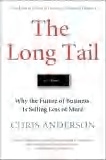There are many situations where, from a marketing perspective, less is more. In these instances a smaller number of features improves a product. One is when you want to add a coolness factor. Examples:
- Take some of the modern shock absorption away from a motorcycle and you’ve got a retro “hard tail” ride.
- Take away the tell-a-friend feature from a product site and you may paradoxically improve the chance of pass-alongs in a younger demographic (see my prior post).
A more common situation is streamlining to reduce complexity, and thus improve adoption. Sometimes a handful of added frills — frills that R&D engineers and a minority of users may find irresistible — actually works against a product. Swiss Army knives have their fans, but most pocket knife owners prefer something less bloated. If they want a screwdriver or corkscrew, they’ll buy one.
The rule of KISS (Keep It Simple, Stupid) applies equally well to software, because learning and installation time are two important constraints to adoption. This is especially true of software that you need to use with other users, simultaneously and remotely.
That’s why I was fascinated on Friday to learn more about a pared-down, lower-cost competitor of WebEx. This category of on-demand software product enables a designated host to share content with others during live web sessions. It’s one of the fastest-growing types of software provided by application service providers (ASPs).
And WebEx is this category’s leader. Their revenue growth has been 23% for each of the past two years and their reported clients now number more 20,000. Needless to say, WebEx has developed an impressive product. But it takes some time to learn, is a little overwhelming in its many features, and requires hosts and participants alike to download special software. That’s a vulnerability.
I was thinking of all of this Friday morning at 8 AM when I was riding the elevator to my appointment with Brevient. I was to meet with Lisa Noone to learn about their MixMeeting — an online collaboration tool for the needs of small and medium businesses.
Of particular interest was the prospect of meeting Brevient’s founder and CEO, Matt Lautz. He was still a teenager when he started the company (who can explain how the lad squandered the first 18 years of his life?), and in a very short time since, he’s created an impressive company with at least one product worth checking out. It truly promises to grab a good share of its market.
I didn’t have to wait long to wait to meet Matt, by the way. It turned out the unassuming fellow in the tee shirt riding across from me in the elevator was noneother.
I’ll know more about the product as I give it a test spin, but the demo was impressive in its brevity (thus the name?) as well as its implied promise of making presentations easier for both my clients and my account services team. The money savings with MixMeeting, and the fact that I’d be supporting the business of a literal neighbor, would be icing on the cake.
 hoopla on Chris Anderson’s long-awaited book, aptly titledÂ
hoopla on Chris Anderson’s long-awaited book, aptly titledÂ